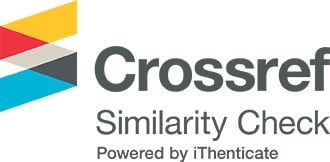Đánh giá khả năng đáp ứng trong phát triển du lịch theo định hướng kinh tế tuần hoàn tại Vườn quốc gia Phong Nha - Kẻ Bàng, tỉnh Quảng Bình
Các tác giả
DOI: https://doi.org/10.59294/HIUJS.28.2024.597Từ khóa:
du lịch tuần hoàn, BWM, phân tích đa tiêu chí (MCA), Vườn quốc gia Phong Nha - Kẻ BàngTóm tắt
Phát triển du lịch theo định hướng tuần hoàn là một hướng tiếp cận phù hợp hướng đến mục tiêu phát triển du lịch bền vững. Với đặc thù là một khu bảo tồn, việc phát triển du lịch tại Vườn quốc gia Phong Nha - Kẻ Bàng chỉ thật sự có ý nghĩa khi đáp ứng được các yêu cầu của kinh tế tuần hoàn. Mục tiêu nghiên cứu hướng đến việc xây dựng khung đánh giá và tiến hành đánh giá phát triển du lịch theo định hướng kinh tế tuần hoàn sử dụng tiếp cận phân tích đa tiêu chí. Các tiêu chí đánh giá dựa trên yêu cầu của du lịch tuần hoàn và tính đặc thù của địa phương. Việc xây dựng với sự kết hợp phương pháp phân tích đa tiêu chí trong lựa chọn chỉ thị, BWM trong xác định trọng số đã giúp hạn chế tính chủ quan trong sử dụng ý kiến chuyên gia. Kết quả đánh giá cho thấy chỉ số đáp ứng tổng hợp ở mức Trung bình. Tuy nhiên, có sự phân hóa khá rõ giữa các khía cạnh, trong đó khía cạnh sử dụng tài nguyên du lịch theo định hướng tuần hoàn có giá trị thấp nhất. Điều này đòi hỏi cần có chiến lược phù hợp để cải thiện các vấn đề liên quan đến khía cạnh này.
Abstract
Tourism development towards a circular economy is a suitable approach towards the goal of sustainable tourism development. With the characteristics of a conservation area, tourism development in Phong Nha - Ke Bang National Park is only truly meaningful when it meets the requirements of circular economy. The research objective is to build an assessment framework and conduct an assessment of circular tourism development using a multi-criteria analysis approach. Assessment criteria are based on the requirements of circular tourism and local specificity. The combination of the multi-criteria analysis in indicator selection and BWM in determining weights has helped limit subjectivity in using expert opinions. Assessment results show that the overall response index is at the Average level. However, there is a clear distinction between the aspects, in which the aspect of using tourism resources in a circular manner has the lowest value. This requires appropriate strategies to improve issues related to this aspect.
Tài liệu tham khảo
[1] C. Rodríguez, C. Florido, and M. Jacob, "Circular Economy Contributions to the Tourism sector: A Critical Literature Review", Sustainability, vol. 12, no. 11, 2020.
DOI: https://doi.org/10.3390/su12114338[2] Nguyễn Đình Hòe và Vũ Văn Hiếu, Du lịch bền vững. Hà Nội, Việt Nam: Nxb Đại học Quốc gia Hà Nội, 2001.
[3] GSTC, "GSTC Destination Criteria Version 2.0 6 December 2019 with Performance indicators and SDGs," GSTC2019, vol. 1, Available: https://www.gstcouncil.org/wp-content/uploads/2013/11/Dest-_CRITERIA_and_INDICATORS_6-9-14.pdf.
[4] Phạm Trung Lương, "Cơ sở khoa học và giải pháp phát triển du lịch bền vững ở Việt Nam", Đề tài Khoa học - Công nghệ cấp cơ sở, 2002.
[5] La Nữ Ánh Vân, "Phát triển du lịch tỉnh Bình Thuận trên quan điểm phát triển bền vững", Luận án tiến sĩ, Trường Đại học Sư phạm TP. Hồ Chí Minh, Thành phố Hồ Chí Minh, Việt Nam, 2012.
[6] Mai Anh Vũ, "Phát triển bền vững du lịch tại Thanh Hóa", Luận án Tiến sĩ Trường Đại học Kinh doanh và Công nghệ Hà Nội, 2021.
[7] D. Pearce, R. K. Turner, R. Perman, Y. Ma, J. McGilvray, and M. Common, Economics of natural resources and the environment, Hemel Hempstead: Harvester Wheatsheaf. Harlow, UK: Longman, 1990.
[8] M. S. Andersen, "An introductory note on the environmental economics of the circular economy", Sustainability science, vol. 2, no. 1, pp. 133-140, 2007.
DOI: https://doi.org/10.1007/s11625-006-0013-6[9] P. Ghisellini, C. Cialani, and S. Ulgiati, "A review on circular economy: the expected transition to a balanced interplay of environmental and economic systems", Journal of Cleaner production, vol. 114, pp. 11-32, 2016.
DOI: https://doi.org/10.1016/j.jclepro.2015.09.007[10] UN Tourism, Integrating Circular Economy Principles in Tourism, 2019. Available: https://www.unwto.org/sustainable-development/circular-economy
[11] M. Dean, A Practical Guide to Multi-Criteria Analysis. 2022.
[12] F. Khosravi, T. B. Fischer, and U. Jha-Thakur, "Multi-criteria Analysis for Rapid Strategic EnvironmentalAssessment in Tourism Planning", Journal of Environmental Assessment Policy and Management, vol. 21, no. 4, pp. 1-20, 2019.
DOI: https://doi.org/10.1142/S1464333219500133[13] ADB, Monitoring and evaluation guidelines private sector projects funded by ADB. 2004.
[14] M.-K. Chan et al., "Theme Paper 3: What are criteria, indicators & verifiers", in "NRET Theme Papers on Codes of Practice in the Fresh Produce Sector", 2002.
[15] E. Yunis, "Issues of measurement of environmental and social sustainability of tourism - Indicators of Sustainable Development for Tourism Destinations and Operations", presented at the International Workshop on Tourism statistics, UNWTO Headquarters, Madrid, Spain, 2006. Available: https://unstats.un.org/unsd/tradeserv/Workshops/Madrid/UNWTO%20presentation%20-%20item19.pdf
[16] Ngô Thắng Lợi và Vũ Cương, "Phân biệt mục tiêu, chỉ tiêu, chỉ số trong lập kế hoạch phát triển", Tạp chí Kinh tế và Dự báo, vol. 14, 2008.
[17] Phan Thị Kim Oanh và Vũ Đăng Tiếp, "Phương pháp luận xây dựng bộ chỉ số đánh giá mức độ tác động của các dự án đầu tư phát triển đến hệ sinh thái rừng", Tạp chí Môi trường, số 12, 2021.
[18] Nguyễn Thanh Tưởng, "Phát triển du lịch bền vững huyện đảo Lý Sơn, tỉnh Quảng Ngãi", Luận án tiến sĩ, Đại học Quốc gia Hà Nội, Hà Nội, Việt Nam, 2018.
[19] Chế Đình Lý, Nguyên lý quản lý tài nguyên và môi trường. TP. Hồ Chí Minh, 2018, tr.155.
[20] Chế Đình Lý, Phân tích hệ thống môi trường, TP. Hồ Chí Minh, 2019.
[21] D. Rio and L. M. Nunes, "Monitoring and evaluation tool for tourism destinations", Tourism Management Perspectives, pp. 64-66, 2012.
DOI: https://doi.org/10.1016/j.tmp.2012.04.002[22] J. Rezaei, "Best-worst multi-criteria decision-making method", Omega, vol. 53, pp. 49-57, 2015.
DOI: https://doi.org/10.1016/j.omega.2014.11.009[23] J. J. Yang, H. W. Lo, C. S. Chao, C. C. Shen, and C. C. Yang, "Establishing a Sustainable Sports Tourism Evaluation Framework with a Hybrid Multi-Criteria Decision-Making Model to Explore Potential Sports Tourism Attractions in Taiwan", Sustainability, vol. 12, no. 4, p. 1673, 2020.
DOI: https://doi.org/10.3390/su12041673[24] M. Kassar, B. Kervella, and G. Pujolle, "An overview of vertical handover decision strategies in heterogeneous wireless networks", Comput. Commun, vol. 31, pp. 2607–2620, 2008.
DOI: https://doi.org/10.1016/j.comcom.2008.01.044Tải xuống
Tải xuống: 278











